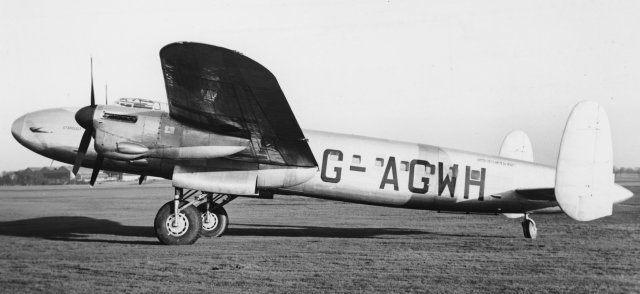
'Star Dust'
In the text below I explain my original ideas of what the radio message could have meant. I have left this explanation here purely for background information, however I was contacted at the end of 2015 by Martin Colwell of SAR Technology Inc. in Canada who suggested to me a far better and far more plausible explanation. In fact I feel very confident that Martin has found the real meaning of the "STENDEC" message after all these years. His solution is so incredibly simple that not only am I frustrated that I hadn't thought of it first, but I'm amazed that in the 69 years since the accident, nobody else has!
Thanks to Martin for sharing it with me, and to see a summary of his theory, click here - STENDEC - The mystery finally solved?
"E.T.A. Santiago 17:45. STENDEC"
That was the last message received from Star Dust, sent by Radio Officer Dennis Harmer at 17:41 on 2nd August 1947.
The Chilean radio operator in Santiago said the reception was clear, but the message was sent rather quickly, so she asked for it to be repeated...twice. The message was believed to be the same on all three occasions.
Clearly, if the crew believed they were only minutes away from Santiago, the radio officer would have been keen to complete that final morse message so he could make voice contact with the controller at Los Cerrillos airport. Therefore it is no surprise that the message was sent rather quickly.
There have been many suggestions over the years as to what was meant by Dennis Harmer’s message that day, as it clearly was not intended to be STENDEC. Some of the theories are totally implausible. A popular one is that STENDEC is an anagram of DESCENT and the letters were re-arranged due to Harmer suffering from the effects of hypoxia. A person suffering hypoxia may possibly make the same mistake consistently three times in succession but is very unlikely to create an anagram of the intended word. Furthermore, a normal message would not be expected to consist of the single word 'descent'.
We have asked many former aircrew for their views on STENDEC and several have said they believe there is a very simple explanation. This is as follows .....
The actual Morse code which the Chilean Operator believed she received was:
S T E N D E C
… _ . _. _.. . _._.
A recognized signoff or 'end of message' signal was 'AR' (with no space between the letters). Therefore a standard signoff would be sent as the Morse '._._.' in other words 'EC' without the space. If the messages from Star Dust were sent quickly it is quite conceivable that spaces were misinterpreted. A common message at the time was "Standard Arrival" followed by the direction from which the aircraft was arriving, so in this case if we simply shift a couple of spaces from 'STENDEC' we are left with 'S T A R E AR' or STandard/ARrival/East/signoff:
S T A R E AR
… _ ._ ._. . ._._.
It is impossible now to know for sure what Dennis Harmer intended his final message to mean. It was almost certainly not STENDEC. Even though the discovery of the wreckage of Star Dust helped us to understand the events of that day in 1947, the word STENDEC will always be a subject for debate.